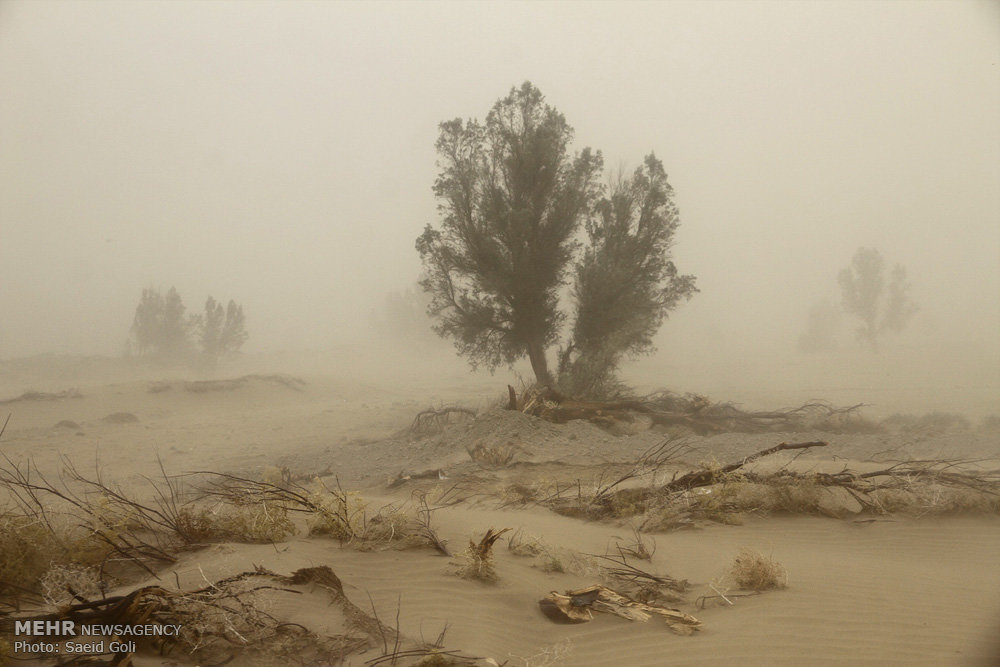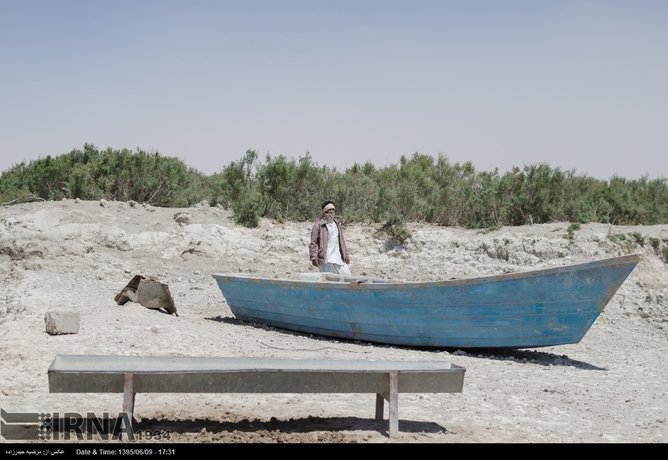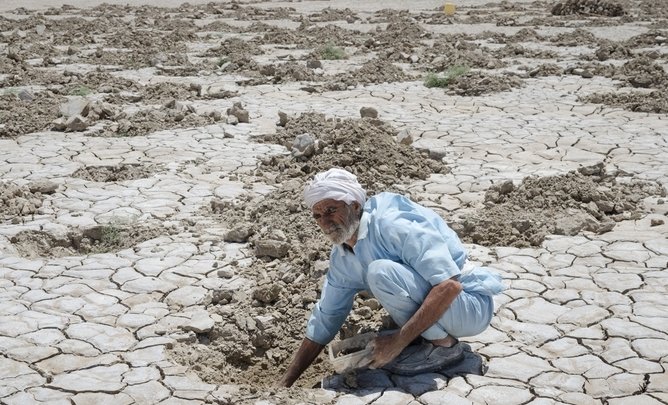Hamoun dryness, a tragedy for southwestern Iran

TEHRAN — Hamoun wetland dryness, caused by long-term drought and low precipitation, is the major reason behind problems in southwestern province of Sistan-Baluchestan, Zia-al-din Shoaei, former head of national working group for combatting sand and dust storms has said.
Moreover, the problems are partly rooted in Afghanistan’s government indifference to the matter, Shoaei said, adding that unfortunately restoration of Hamoun wetland, as transboundary body of water, has not been a priority for Afghanistan.
Iran Afghanistan water dispute
The Hamouns are transboundary wetlands on the Iran-Afghan border made up of three lakes: Hamoun-e Helmand, which is entirely in Iran, Hamoun-e Sabari on the border, and Hamoun-e Puzak, almost entirely inside Afghanistan. The three lakes are linked and fed by water from the Helmand River which starts in the Hindu Kush Mountains in Afghanistan.
According to the Atlantic Council (an American think tank in the field of international affairs) disputes over water between Iran and Afghanistan date to the 19th century when Afghanistan was a British protectorate. Frederick Goldsmith, a British officer, drew the Iran-Afghan border along the main branch of the Helmand River.

In 1950, Iran and Afghanistan created the Helmand River Delta Commission with the task of measuring and dividing river flow between the two countries. In 1951, the Helmand River Delta Commission presented its report, recommending that Iran’s share of the Helmand waters amount to twenty-two cubic meters per second. Iran, however, rejected the report, asking for a larger share.
In 1973, the then Iranian prime minister, Amir Abbas Hoveida, and his Afghan counterpart Mohammad Musa Shafiq signed an accord that accepted the flow of water into Iran at twenty-two cubic meters per second with an option for Iran to purchase an additional four cubic meters per second in normal water years.
In return, Iran agreed to allow the ports of Bandar Abbas and Chabahar to be available to Afghanistan without preconditions. However, this agreement was neither ratified nor fully implemented due to the political developments in both countries including a 1973 coup in Afghanistan, the 1979 Iranian revolution, the Soviet occupation of Afghanistan that same year, and finally the rise of the Taliban in 1995.
Hamoun in decline, sand dust storms on the rise
In the last two decades, once fertile wetlands have drastically dried up. The Taliban government closed the sluices to the Kajaki dam on the Helmand until 2002, which aggravated the impact of the worst drought the region has experienced in many decades, brought about partially by climate change and warming temperatures.

The Hamoun wetlands, which once supported broad plant and animal diversity and was the main source of the region’s economic viability, have nearly dried up due to climate change, dam construction and other poor water management practices. This has led to large population migrations and high unemployment rate.
Serious public health challenges have exacerbated the situation. Sand and dust storms are on the rise as the barren and exposed lake bed has become a hotspot for them and the so-called 120-days wind -- a source of cool air and power for windmills in the past – are now lasting 160 days and have become the source of pollution and diseases.
According to Shoaei once Hamoun wetland was measured at 5,660 square kilometers. Some 3,820 square kilometers of the wetland was located in Iran and the rest was in Afghanistan, he noted.
Hamoun’s life depended on Helmand River which travels for 1,100 kilometers to flow into Hamoun, ISNA news agency quoted him as saying.
Currently Hamoun wetland, which is suffering dryness, needs some 10 billion cubic meters of water to be restored, and regarding the high evaporation rate in the area every year several billion cubic meters of water should enter the wetland to compensate for the annual 5,000 millimeters evaporation, he explained.
Construction of numerous dams in Afghanistan has clearly lowered water flow to Hamoun wetland and coupled with limited rainfalls and drought spells actually the wetland’s condition has deteriorated.
Shoaei went on to say that Kajaki dam water is mainly used for agricultural practices in Afghanistan and there remains no water to flow into Hamoun.
For the time being Afghanistan and Iran have agreed on less than 900 million cubic meters share of water for Hamoun wetland in Iran, and the amount is not enough to restore or protect the wetland, he regretted, stating that the sum is inevitably used to provide the citizens with drinking water.
Foreign Ministry ineffective policy

Shoaei further explained that since water management of Hamoun is not being handled by one government water shortage has become a challenge in the area.
He also deemed Iran’s Foreign Ministry’s policy in claiming Hamoun water right ineffective saying that the ministry had better seeking advice from a team of experts in water issues.
Fortunately last year Iran succeeded in encouraging Afghanistan to negotiate on the water right of Hamoun and that’s a win for Iran, he highlighted.
Both countries should accept the fact that Hamoun is an international wetland and saving this wetland must become a priority, but the problem is that each country has always looked after their own interest, he lamented.
Further negotiations would definitely convince both sides that economic gains from restoration of the wetland would outweigh agricultural benefits, he concluded.
MQ/MQ
Leave a Comment